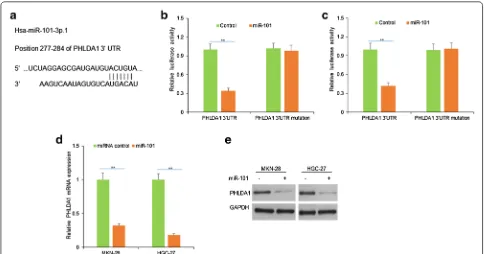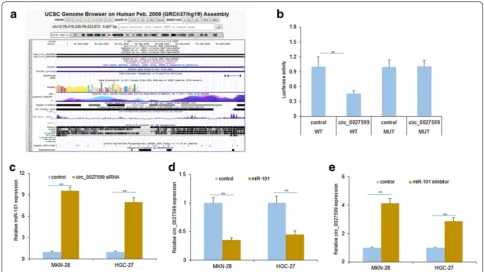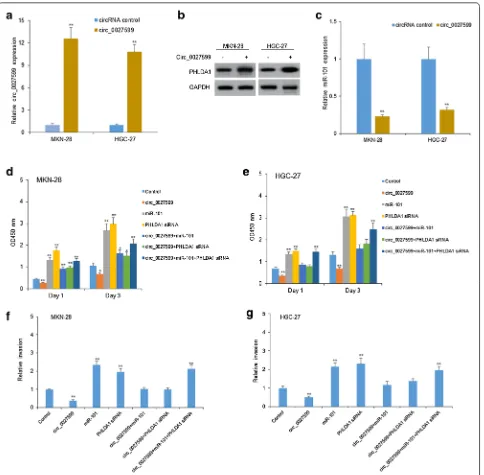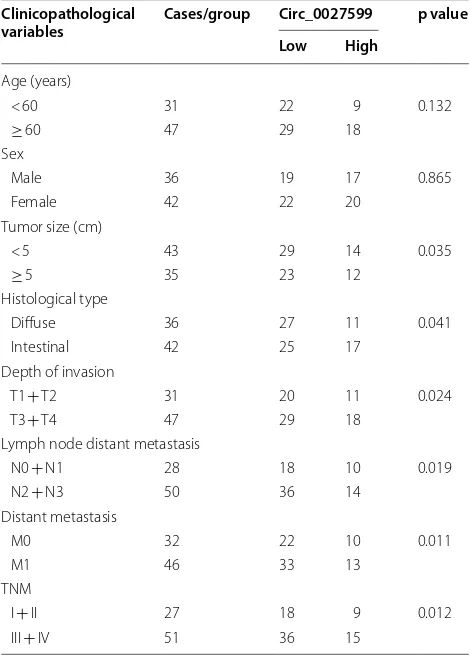Circ_0027599/PHDLA1 suppresses gastric cancer progression by sponging miR-101-3p.1
Full text
Figure




Related documents
standard in large pediatric settings to address the psy- chosocial concerns that accompany hospitalization and other health care experiences. Child life programs facil- itate coping
The search strategy included terms for outcome (bladder neoplasm or bladder cancer or bladder tumor or bladder tumour or carcinoma of bladder) and exposure [Secondhand smok*
Abstract: In this study, an improved UPLC-MS method for simultaneously quantifying twelve major components belonging to two chemical types was developed and validated,
We have proposed a new mathematical epidemiological model with an isolated compartment and calculated its Basic reproduction number.. Also, we have discussed the equilibrium
In this review we report a summary of the incidence of endophthalmitis following vitrectomy, various risk factors for their occurrence, the microbiological profile and the
with a history of missing ophthalmic examinations at our hospital or other ophthalmic clinics for more than a year (noncompliant group) and those without any previous
Table 2 intraoperative data for patients with previous pars plana vitrectomy undergoing surgery for giant retinal tear-related retinal detachments.. Intraoperative
At zero temperature, the axial current, as a function of the angular velocity and chemical potential, vanishes in a two-dimensional plane region..

